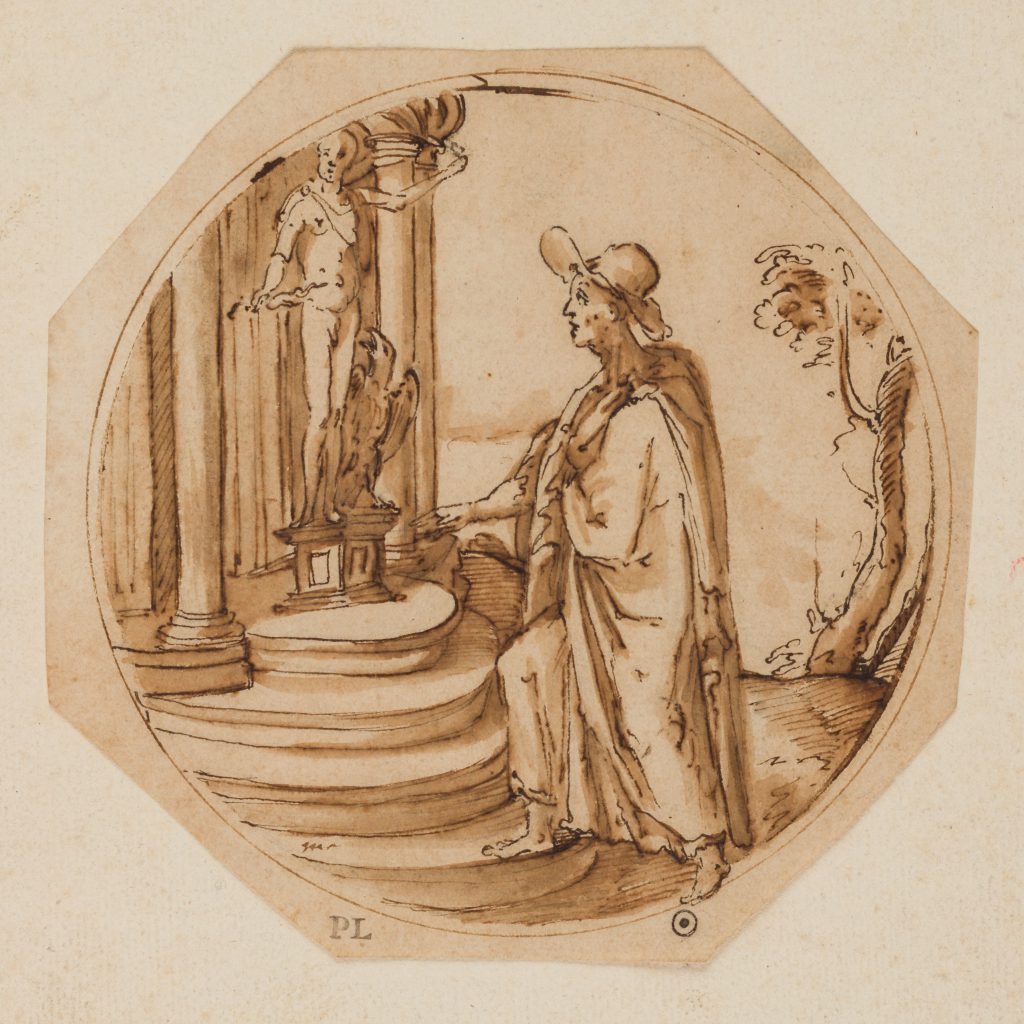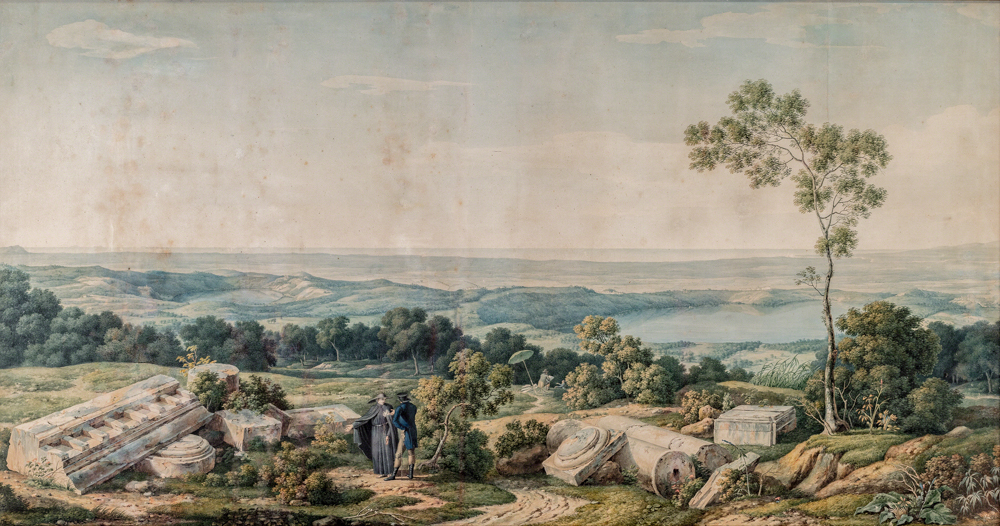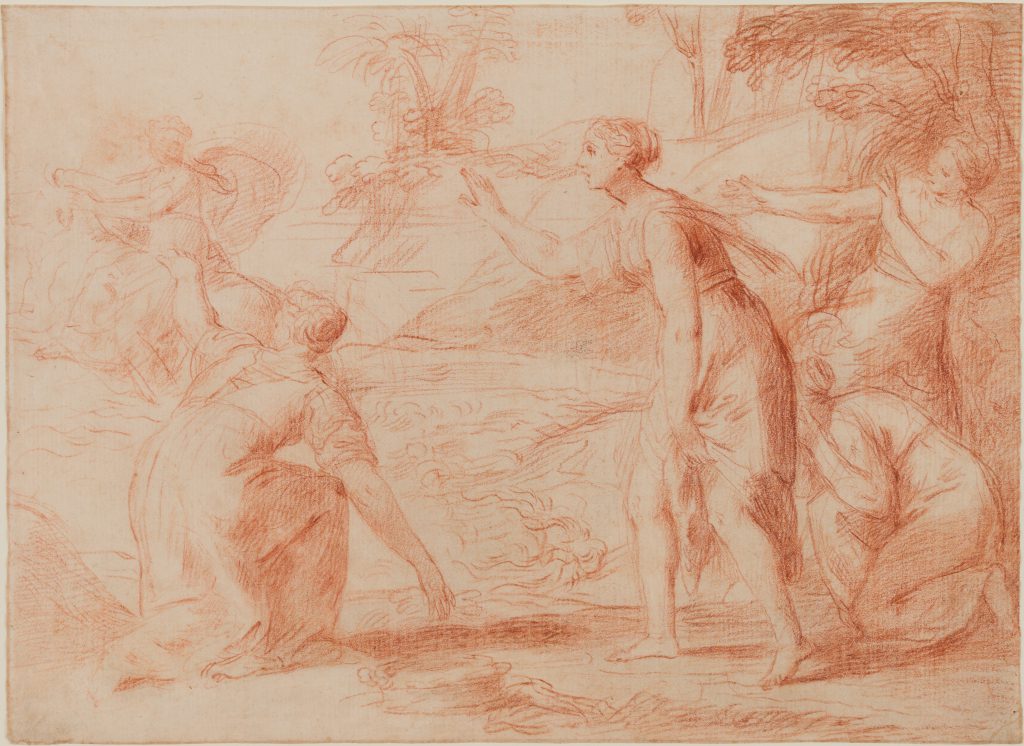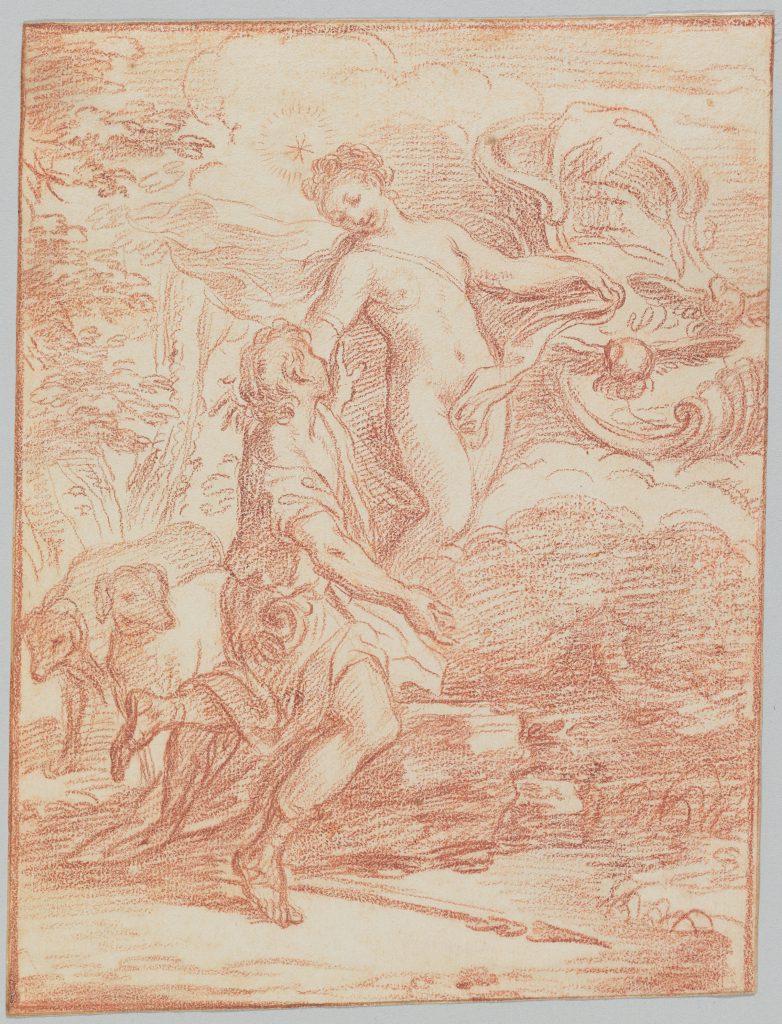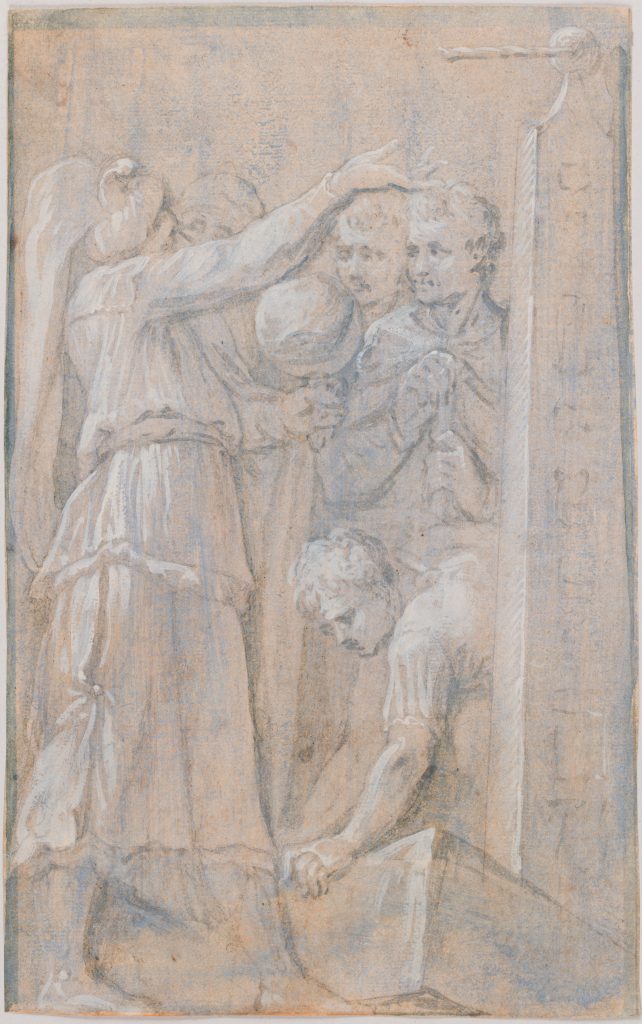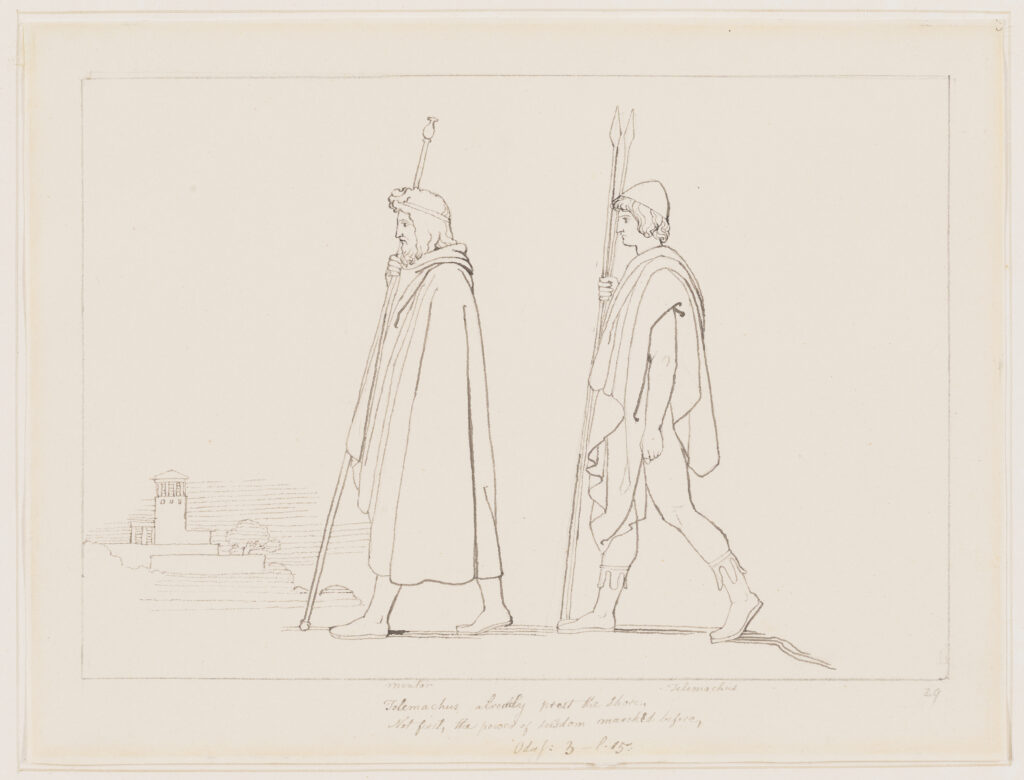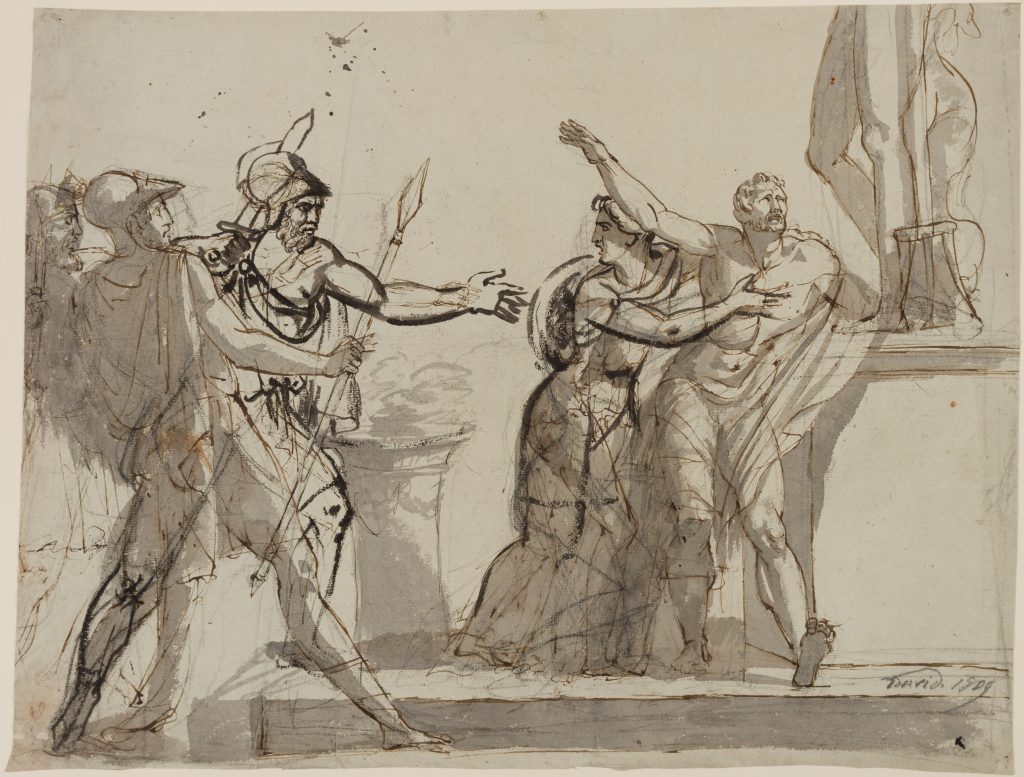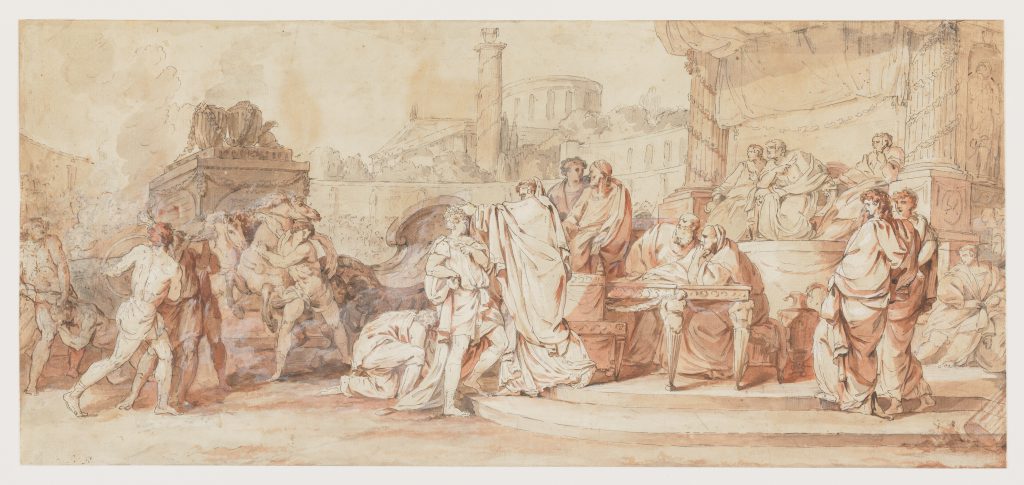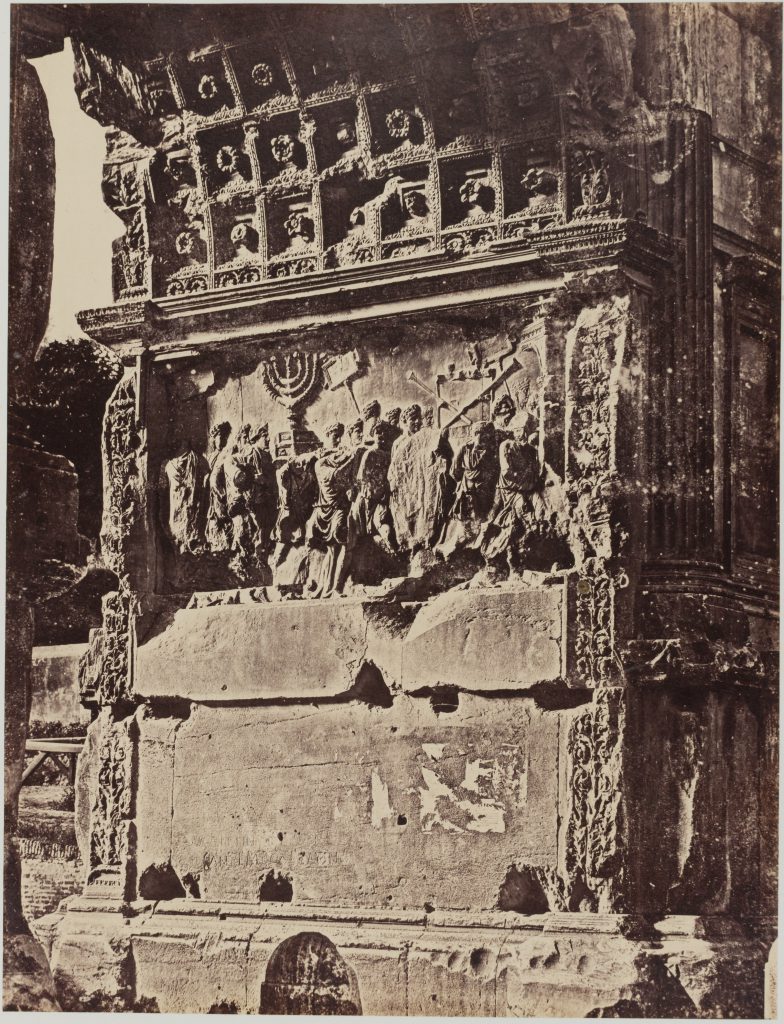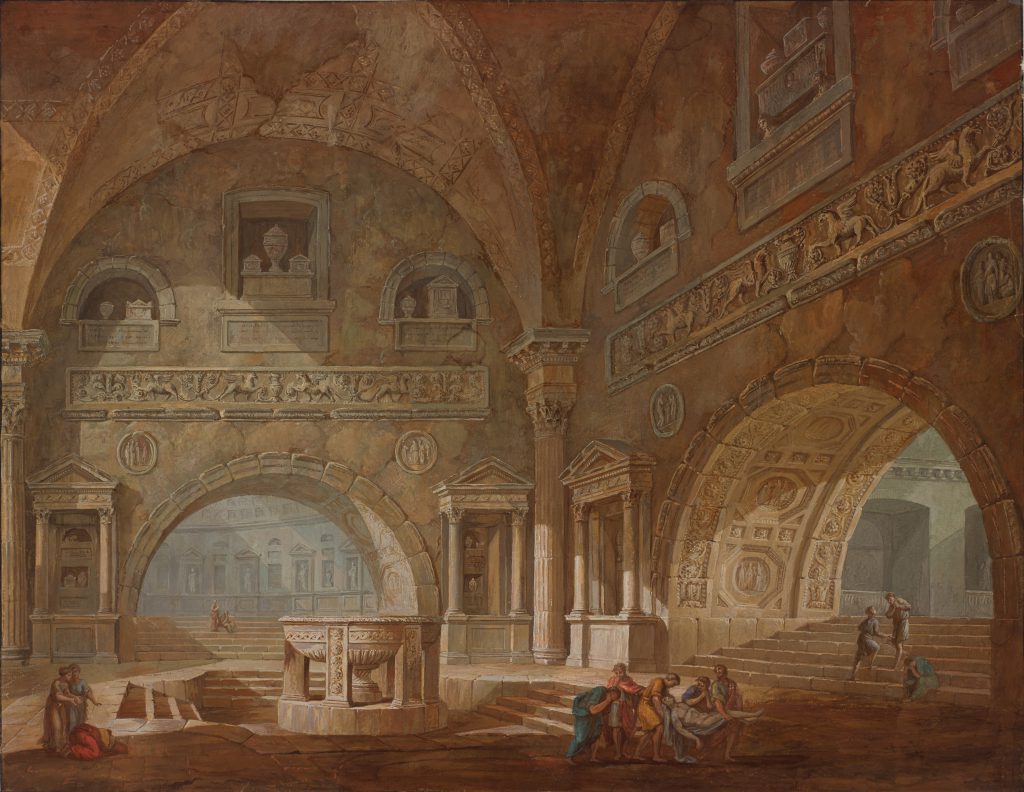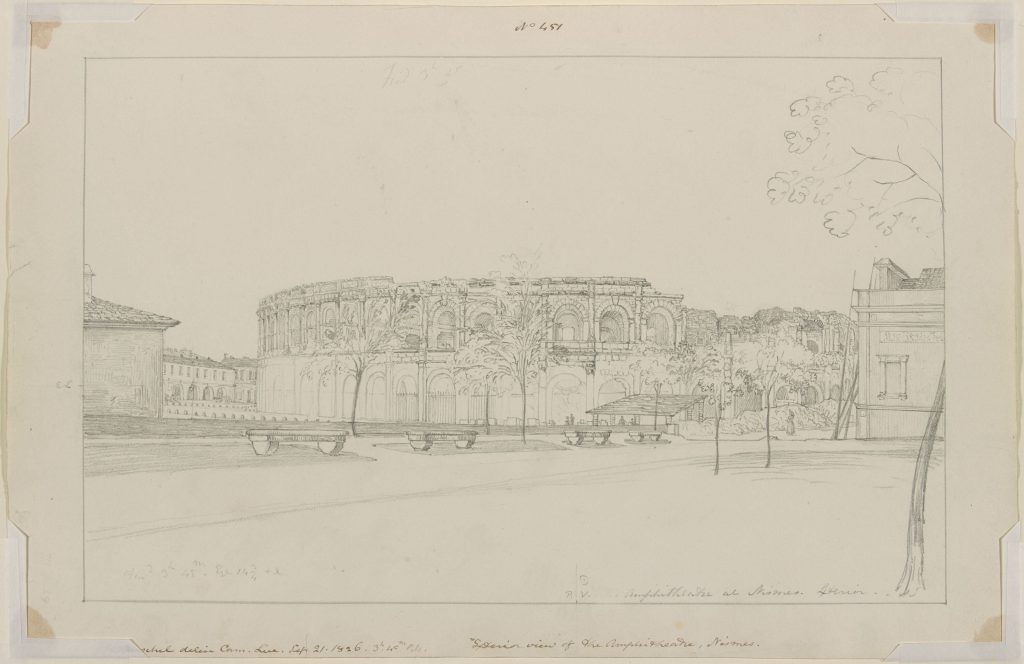A Man Before a Roman Temple with a Statue of Jupiter
Acquired in honor of Susan Wegner, Associate Professor of Art History, with funds provided by an anonymous donor
2021.8This charming pen and ink drawing, attributed to Federico Zuccaro, presents an enigmatic scene on a circular field. Such circular designs often ornamented dinnerware, colorful maiolica plates, cisterns (wine-coolers), and pilgrim flasks. The drawing’s intriguing subject displays a pilgrim wearing a petasos, a broad-brimmed travelling hat (often worn by the god Hermes in accompanying souls to the underworld, as in Bowdoin’s Eurydice cast). The figure approaches the rounded stairs of a temple to Jupiter, which is identified by the standing cult figure of a young beardless god holding his undulant thunderbolt and sharing the plinth with a large eagle.
One extraordinary ancient pilgrimage to an oracle at a famous temple of Jupiter was Alexander the Great’s passage through the Sahara Desert to consult the oracle at the Siwa Oasis’ Temple of Jupiter-Ammon. Alexander knew that two sons of Jupiter, Hercules and Perseus, had made that perilous journey and survived thanks to the intervention of supernatural assistants: ravens, crows, or snakes that led them to water and eventually to the Siwa Oasis. So, Alexander and a few companions set across the harsh desert toward Siwa. Once there, a private audience with the oracle convinced Alexander—before he had even changed from his travelling clothes—that he was, indeed, the son of Jupiter-Ammon, rather than that of the mortal Philip of Macedonia.
Stories of Alexander the Great appeared in palace interiors and facades in Rome from the 1520s through the 1550s. Drawings and prints after Federico Zuccaro’s brother Taddeo’s lost frescoes for the Palazzo Mattei Caetani, Rome (1559–1560) reside in the Royal Collections. In Taddeo’s frescoes, ovals and tondos surround drawings of scenes such as Alexander judging Timoclea and Alexander taming Bucephalus. This suggestion for the subject has some weaknesses. There are no ram’s horns as one might expect for a temple of Jupiter-Ammon in Egypt. Alexander usually appears in armor but might not be shown so after trekking across the Sahara.
In early nineteenth-century America, Rembrandt Peale used a carved stone head of Jupiter as the finial for his “porthole” portrait of George Washington, which he hoped would become the standard image of the Pater Patriae, or “Father of the Country.” Although it did not eclipse the favored Gilbert Stuart rendering, it still exists in several versions, including one in the Senate and one in the Pennsylvania Academy of Fine Arts, 1824. A lithographic print of Peale’s 1827 design contributed to the popular perception of Washington’s leadership as matching that of the gods, while also evoking the classical ideals that inspired the young nation.
